| Revista Umělec 2003/2 >> The Star and the Gate of the Gray Castle: The Great Participant | Lista de todas las ediciones | ||||||||||||
|
|||||||||||||
The Star and the Gate of the Gray Castle: The Great ParticipantRevista Umělec 2003/201.02.2003 Jiří Ptáček | Perfil | en cs |
|||||||||||||
|
The Třebíč Jewish Ghetto has a proud new symbol this year: a simple neon Star of David, like a comet shooting up to heaven. The Ghetto is still waiting for its rebirth (this one touristic, under the patronage of UNESCO). The neon light was enough to bring fame. It contains something of a violently interrupted tradition and something of the heretical star of Bethlehem. When we learn that this commercial commission was carried out by Pavel Ryška, it begins to dawn on us. Even Ryška’s method is reflected in the star, which has earned him a position on the Czech conceptual art scene that cannot be ignored.
Pokemon When Pavel Ryška exhibited his promotional placards of gray pokemons and exploding packages in Jelení Gallery in Prague, there was no doubt that this represented a step away from a known and well-trodden path. This was 2001, and the mania for the army of small Japanese figures led by marshal Pikachu was at an all-time peak. Every pokemon on the market was sold, either in accordance with the law, or illegally. Ryška proceeded in the same way: He took Pikachu — the cute little action hero, electronic good knight, but also as a representative of a topical scale of values — as a pop star, a no. 1 hit. At the same time, there was no need to bother with the original provenance, a thousandth mutant copy of the original was sufficient. He knew that the copy in front of us could not have come about if the most characteristic attributes had not been removed. But it still remains tied up with the consequences of its model. However, Ryška’s exhibition involves something other than the relationship of the copy and the copied. The merry Pikachu in the exhibition was no longer yellow, and long black bangs fell across his brow. The ribbon-wrapped package from the window of the department store, even without the price written on the explosion graphics on the price tag, looked awful. On another stand, rails led into the gate of a gray children’s castle. In Jelení, pictures of invasion and aggression were concentrated, despite being depicted as children’s delight. A mixture of market publicity combined with representatives of the evils of civilization: Hitler, concentration camps and terror. We are aware of the things that defy our individual will and attack us without mercy, but they continue to attract us all the same. Pavel Ryška questions a global icon, simultaneously detracting from the intact appropriated “material” while concentrating on the insertion of irrelevant elements. However, in order not to create an obvious collage, but a newly organic visual shape, he uses technology that, at the turn of the millennium, has amazingly simplified the contradictory relationship between the disconnected: computer programs distributed throughout the world. Their properties can quickly and with certainty enter the basic consciousness of pictorial media. (One could even say that the new Euro-American generation understands the properties of the pencil and Illustrator to the same extent.) Ryška did not discover America, but he brought his ironic-diverse diction into the sphere of visual convention, smoothed it over and let the differences speak. This comes from the initial placement into context, and should for us — as shareholders in the visual history of our time — provide, at the very least, the most basic contours. In this instance, it was the visual history of the market context for Pokemon, all the perceptible elements of this context, and the media onslaught. Without Words Ryška has given a dominant role to the transformation of what we know well. But he has gradually begun to deal in more and more ingenious ways with the locations of where the shapes were found, and in what range of communication it was necessary to account for them. Keeping in mind Ryška’s respect for strategraphically selected places, the gallery, and the relationship within it between the artist and the viewer, supports another of Ryška’s cycles of computer graphics, Without Words. Without Words is a series of drawn jokes [ed.: In Czech joke books from the 1980s “Without Words” would appear under jokes that contained no dialogue]. However, they share a common feature: They are all jokes about art, specifically about documents of 20th century art history. In each of them there is at least one gallery relic of artistic activity from the 20th century taking part in various events. For example, a Campbell’s soup can crouches terrified in a corner because someone has opened and eaten it. In another, a flies swarm over a Piero Manzoni tin, and why not, since it contains the artist’s old excrement? Generally speaking, artists since the beginning of the 20th century have often turned to items from everyday life, turned their purposes inside out and placed them on the white pedestals of institutional galleries. Ryška has brought distorted objects back to life, but in a roundabout way via the story. Indeed, he has lampooned their ideological potency, but at the same time brought them closer to us through the fictitious action on the theme of “what a work of art could cost.” An informed observer will underpin intelligent work with meaning, and an unsystematic consumer of art will fail to profit, although something will remain for him: the sentimental expression of the elliptical eyes, which for Ryška were brought to perfection by the animators of children’s cartoons. The gentle coloring, the simple construction from elementary shapes and the grandiloquent technique, the precision of the semi-veiled and, let’s say, the rough handling of the fruits of human creativity. It is as if just such cruelty never belonged among the rewarding public themes as a consequence of the never-ending spirals of cultural reflexes. But such cannot fail to be the ambivalence of contemporary work. Its importance is based on its connection, as well as its rejection — on the knowledge of its own and others’ value. At the same time, there is an acknowledgment of the worthlessness of the commodity. The beauty of contemporary work shows itself as a systemic gauge that is always positively connected with the system (connection being the basis of its identification). But as a consequence, it is itself rejected as being regressive and insufficient (which is its alienation and dissimilarity). Not one of these comes separately to us, and to look at Ryška with a microscope is the only act that could, though manipulation of the space, reduce us unpleasantly in size. Once in the past, Ryška sprayed the inscription Zasranej Izrael (Fucking Israel) on the wall of an Olomouc gallery. The public was so scandalized that the curator had to white it out. Then he assaulted state institutions without saying why and without revealing the cause of his outrage. He could have come away from this as one of those young artists who only shouts barbaric garbage “from the walls of the gallery” to the point that no one believes his message makes any sense. Now he has completely entered the paradox: he has created socially ironic artifacts in the most “artifactual” form (a picture in a frame), which offers itself to the same thing that Ryška brought about in his other “colleagues.” Without Words can be considered an extraordinary cycle, because it is left to its own tender mercies. The sabotage is carried out not only as a representation, but the representation rushes in to sabotage itself. Ryška has returned to an analogous approach in his latest pictures: the monumental strip Dead Valley for Brno’s Pražák Palace. He understood the invitation to his largest independent exhibition as a challenge to comment directly on the whole artistic direction of the 20th century — surrealism. Each user of the most widespread graphic programs knows that “surreal vision” can be created in the simplest way. Pavel Ryška, however, feels strongly about his carefully elaborated Dali-esque composites. Once the emphasis on the point of the action was pushed aside, he once again laid bare the old, known truth: the discoveries of the pre-war generation are now legitimized as a guarantee of fantasy. The countless number of lovers of the melting watch only go to show the deep inclination towards dreams, in any form. But it could also be noted that the Bretonesque image of convulsive beauty has not spread. Or rather, has drowned in lyrical romantic reverie. Of course, the rare few sacrifice so much effort to allow the fantasy to be laid bare in all its shallowness. Ryška is one of them. Once again he has exhibited an art internally weakened and fatuous, but indeed flattering and, as regards the commentary, consistent and penetrating, incorporating the self as the vulnerable subject into the critic of the other. Thoughts of Modern Painters Ryška perceives the gallery as a place for entering his own history and traditions. Even Pokemons can be transferred outside of it, because they involve non-artistic material. Without Words and Dead Valley were not supposed to speak to this theme elsewhere. The acceptance of a limited playing area is shown as a condition for the transfer of concrete information and its maintenance. And if there are often doubts about high art in galleries, then Pavel Ryška casts his votes in favor of it. Similarly in Thoughts of Modern Painters he announces its functional and commercial aims. They are designed for a calendar which can be found in a variety of galleries or in specialist bookshops and the more courageous stationary shop. And Ryška has concluded that success will accomplish nothing less than symbiosis with more famous artists. Therefore Thoughts uses the human obsession with uncovering the intimacy of genius, the fancy to catch it in its underwear. We will not see a single artist, and no underwear; instead there are a dozen views from the atelier. The atelier maintains a significant position in artistic mythology. It is regarded as the place where the traces of genius are most legible, where one can file more valuable information into the filing cabinet of voyeurism. To his surprise, thanks to Thoughts, we discover that the art of the 20th century is not the result of eccentric psychic movements, because it comes from a careful study of science, unobserved hygiene regulations or only from distinct physical laws that the atelier has taken control of. Thoughts of Modern Painters could be distorted by didactics, as it was to them that modernist thinkers often turned in order to spread the concept, now warped so much that as a result we can expect no guidance from it. Once again a joke appears on the scene, this time obviously about the self. That is to say, as soon as parody finds the right market conditions, it changes into profit for the one who parodies. Why get angry, business is business and Pavel Ryška likewise feels like being noticed. Mainly we do not want to ask why some other way is not possible. The illusions of great art and Bohemians (with certain theoretical qualifications) feed main-stream film and book production. Auction halls get a children’s pleasure from it. Thoughts of Modern Painters is becoming a looking glass for the position of present-day artists on the social ladder. Don’t knock it. It is an attempt at a “starting point” gesture and it is about just this gesture. Pavel Ryška makes graphics. This verifies the circumstances in which it is possible to work with a parody of the history of art. If he builds the history in a new light, mulls over designated contexts, then the ability to absorb certain social groups and to parody others means asking what the artist means to art. The neon above Třebíč truly shines with meaning, because it is fed by the same motivation. To show the wild coexistence with the world that humans exhibit, how to manage to whoosh in all directions and expose every molecule, heretically and conflictingly. All that remains is for us to openly admit to participation, to freeloading, to not making a virtue out of this fault, but to build on the potential exuberance. Such may be the thoughts of a conceptual artist of the 21st century.
01.02.2003
Artículos recomendados
|
|||||||||||||
|
04.02.2020 10:17
Letošní 50. ročník Art Basel přilákal celkem 93 000 návštěvníků a sběratelů z 80 zemí světa. 290 prémiových galerií představilo umělecká díla od počátku 20. století až po současnost. Hlavní sektor přehlídky, tradičně v prvním patře výstavního prostoru, představil 232 předních galerií z celého světa nabízející umění nejvyšší kvality. Veletrh ukázal vzestupný trend prodeje prostřednictvím galerií jak soukromým sbírkám, tak i institucím. Kromě hlavního veletrhu stály za návštěvu i ty přidružené: Volta, Liste a Photo Basel, k tomu doprovodné programy a výstavy v místních institucích, které kvalitou daleko přesahují hranice města tj. Kunsthalle Basel, Kunstmuseum, Tinguely muzeum nebo Fondation Beyeler.
|







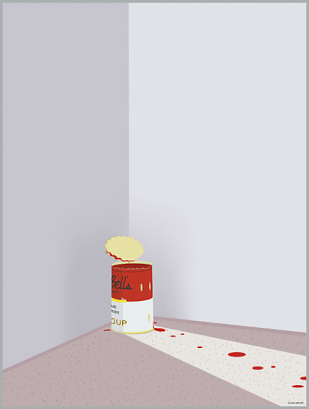

























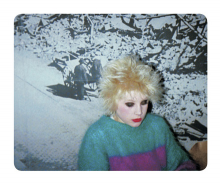
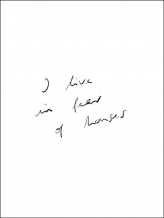
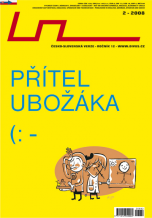
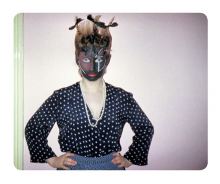


 New book by I.M.Jirous in English at our online bookshop.
New book by I.M.Jirous in English at our online bookshop.
Comentarios
Actualmente no hay comentariosAgregar nuevo comentario